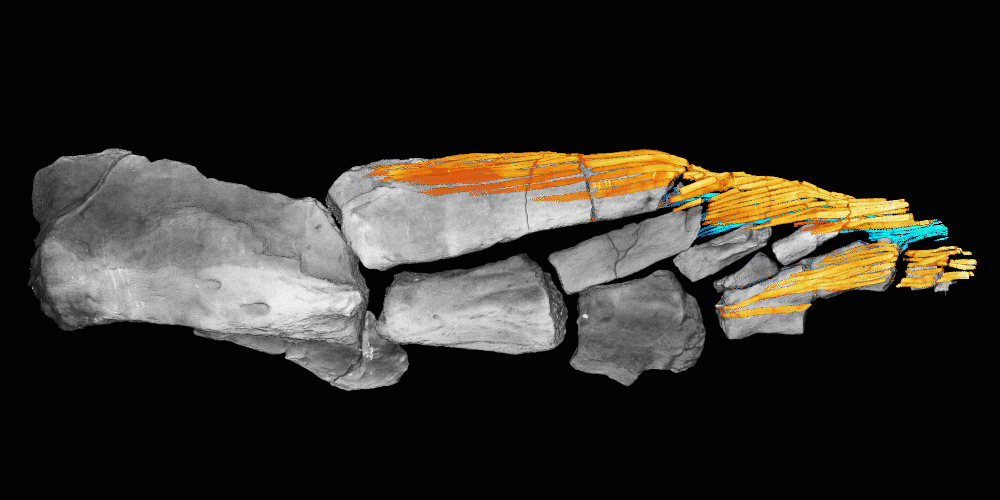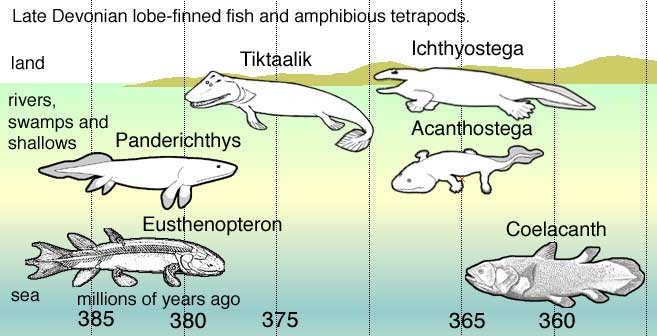
A computed tomography scan of the late Devonian Tiktaalik roseae’s fin skeleton showing its dorsal rays (yellow) and ventral rays (cyan).
March 25, 2020, NSF
Around 385 million years ago, fish started hauling themselves onto land. Over time, their flattened fins gradually transformed into sturdy legs, ending in feet and digits. Rather than paddling through water, they started striding over solid ground. Eventually, these pioneers gave rise to the tetrapods—the lineage of four-legged animals that includes reptiles, amphibians, and mammals like us. This transition from water to land is an evocative one, and for obvious reasons, people tend to focus on the legs. They are the organs that changed most obviously, that gave the tetrapods their name, and that carried them into their evolutionary future.

In Late Devonian vertebrate speciation, descendants of pelagic lobe-finned fish – like Eusthenopteron – exhibited a sequence of adaptations: Panderichthys, suited to muddy shallows; Tiktaalik with limb-like fins that could take it onto land; Early tetrapods in weed-filled swamps, such as: Acanthostega which had feet with eight digits, Ichthyostega with limbs. Descendants also included pelagic lobe-finned fish such as coelacanth species. In 2000 P. Ahlberg et al. described a transitional form from fish to tetrapod, Livoniana. This creature dates 374 – 391 million years ago, a successor to Panderichthys.
